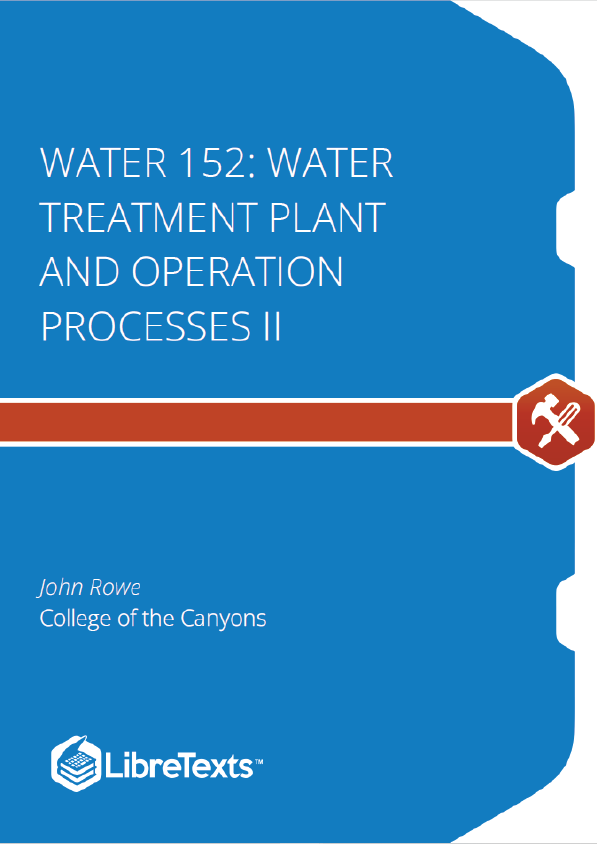This text examines advanced topics in conventional surface water treatment processes and disinfection, as well as non-conventional treatment processes. Assists in preparation for Grade T3 and T4 Water Treatment Plant Operator’s Certificate examination given by the State of California Water Resources Control Board.
Water Treatment Objectives
The basic objective in the operation of drinking water treatment plants is to produce drinking water that is safe and aesthetically pleasing at a reasonable cost with respect to capital as well as operation and maintenance.
From a public health perspective, the production of safe drinking water is one that is free of harmful microorganisms and toxic materials, and this object is the first priority. It is also important to produce high-quality water that appeals to the consumer. Generally, the water must be clear, free of turbidity, colorless, and free of objectionable tastes and odors. Consumers also show a preference for water supplies that do not stain plumbing fixtures and clothes, do not corrode plumbing fixtures and piping, and do not leave scale deposits or spot glassware.
Consumer sensitivity to the environment has significantly increased in recent years. With regard to water quality, consumer demands have never been greater. In some instances, consumers have substituted bottled water to meet specific needs, namely, for drinking water and cooking purposes.
Design engineers select water treatment processes on the basis of the type of water source, source water quality, and the desired finished water quality which is established by drinking water regulations and consumer desires.
Water has many important uses and each requires a specific level of water quality. Delivering safe and pleasant drinking water to customers should be the operator’s primary concern. Drinking water should be acceptable to domestic and commercial water users. Some industries, such as food and drug processors and the electronics industry, require high-quality water. Many industries locate where the local water supply meets their specific needs, and other industries maintain a water treatment facility on-site to produce water suitable for their needs.
The Safe Drinking Water Act
Regulations concerning public water systems are focused on the production of water that is safe for people to drink. These regulations continue to change in order to address new information concerning the health effects of different substances that may be in drinking water. Operators are urged to develop close working relationships with local regulatory agencies in order to keep informed of the changes in regulations and requirements. An excellent source of up-to-the-minute information concerning drinking water regulations is the US Environmental Protection Agency’s toll-free Safe Drinking Water Hotline at (800)426-4791.
In 1974, the Safe Drinking Water Act was signed into law, giving the federal government, through the EPA, the authority to:
Set national standards regulating the levels of contaminants in drinking water
Require public water systems to monitor and report their levels of identified contaminates
Establish uniform guidelines specifying the acceptable treatment technologies for cleansing drinking water of unsafe levels of pollutants
The EPA sets two kinds of drinking water standards. Primary regulations establish maximum contaminant levels based on the health significance of the contaminants while the secondary standards are established based on aesthetic considerations and are a state option.
While the Safe Drinking Water Act (SDWA) gives the EPA responsibility for developing drinking water regulations, it gives state regulatory agencies the opportunity to assume primary responsibility for enforcing the regulations.
Implementation of the SDWA has improved basic drinking water purity across the nation. However, the EPA surveys of surface water and groundwater indicate the presence of synthetic organic chemicals in the nation’s water sources, with a small percentage at the levels of concern. In addition, research studies suggest that some naturally occurring contaminants may pose even greater risks to human health than synthetic contaminants. Further, the concern is growing concerning microbial and radon contamination.











